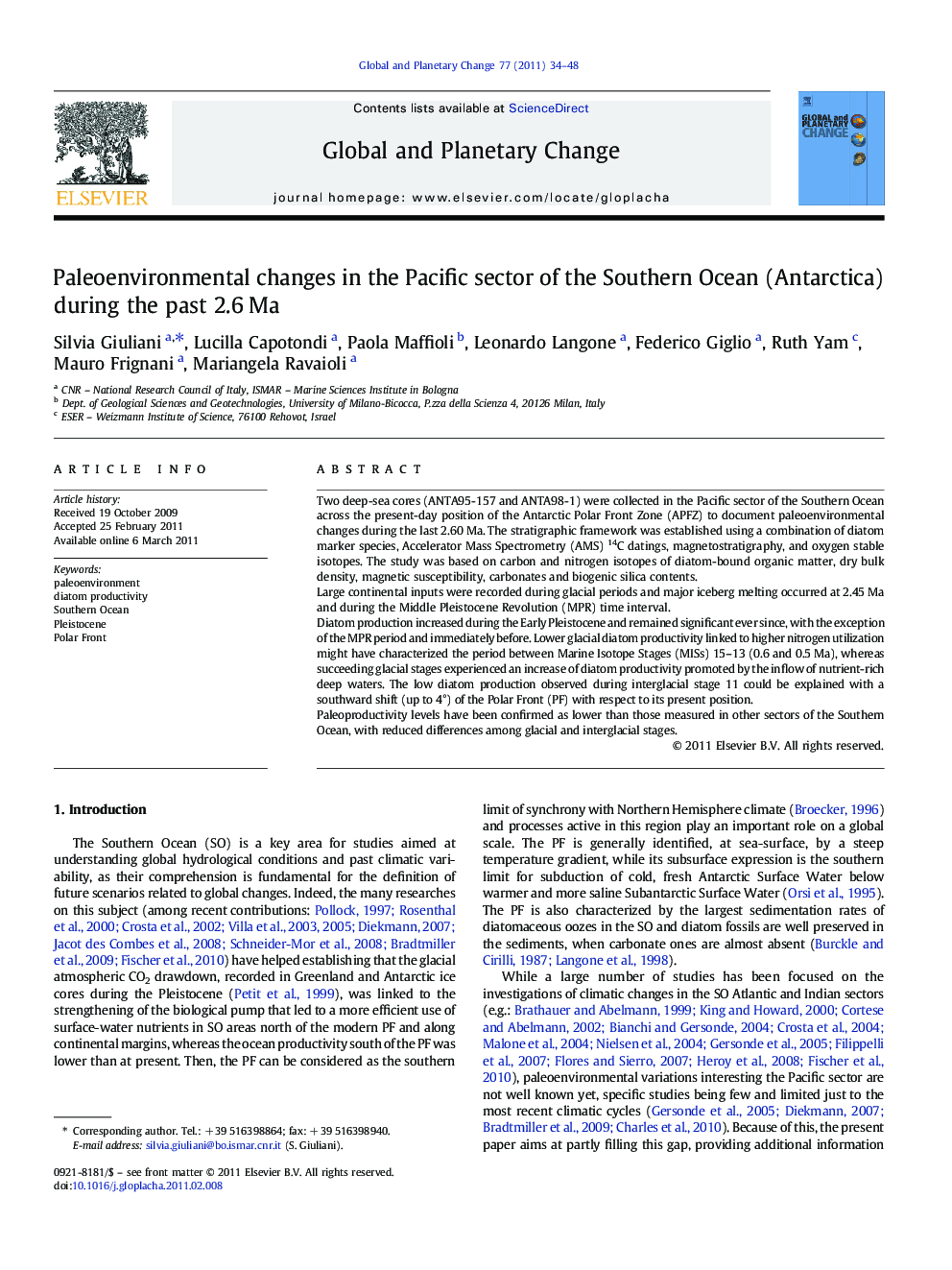| Article ID | Journal | Published Year | Pages | File Type |
|---|---|---|---|---|
| 4463840 | Global and Planetary Change | 2011 | 15 Pages |
Two deep-sea cores (ANTA95-157 and ANTA98-1) were collected in the Pacific sector of the Southern Ocean across the present-day position of the Antarctic Polar Front Zone (APFZ) to document paleoenvironmental changes during the last 2.60 Ma. The stratigraphic framework was established using a combination of diatom marker species, Accelerator Mass Spectrometry (AMS) 14C datings, magnetostratigraphy, and oxygen stable isotopes. The study was based on carbon and nitrogen isotopes of diatom-bound organic matter, dry bulk density, magnetic susceptibility, carbonates and biogenic silica contents.Large continental inputs were recorded during glacial periods and major iceberg melting occurred at 2.45 Ma and during the Middle Pleistocene Revolution (MPR) time interval.Diatom production increased during the Early Pleistocene and remained significant ever since, with the exception of the MPR period and immediately before. Lower glacial diatom productivity linked to higher nitrogen utilization might have characterized the period between Marine Isotope Stages (MISs) 15–13 (0.6 and 0.5 Ma), whereas succeeding glacial stages experienced an increase of diatom productivity promoted by the inflow of nutrient-rich deep waters. The low diatom production observed during interglacial stage 11 could be explained with a southward shift (up to 4°) of the Polar Front (PF) with respect to its present position.Paleoproductivity levels have been confirmed as lower than those measured in other sectors of the Southern Ocean, with reduced differences among glacial and interglacial stages.
Research Highlights► Paleoenvironmental changes during the last 2.60 Ma were studied in two deep-sea cores from the Pacific sector of the SO. ► The study was based on δ13C and δ15N of diatom-bound organic matter, dry bulk density, magnetic susceptibility, carbonates and biogenic silica contents. ► Large continental inputs were recorded during glacial periods and major iceberg melting occurred at 2.45 Ma and during the MPR. ► Diatom production increased during the Early Pleistocene and remained significant ever since, with the exception of the MPR period and immediately before. ► The low diatom production observed during MIS 11 could be explained with a southward shift of the PF with respect to its present position.
